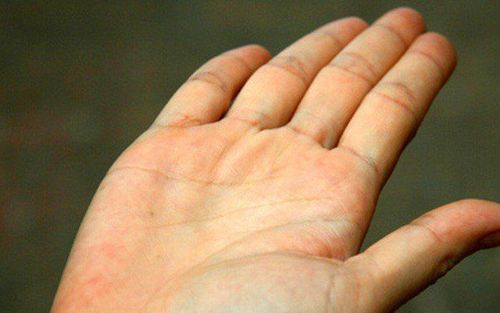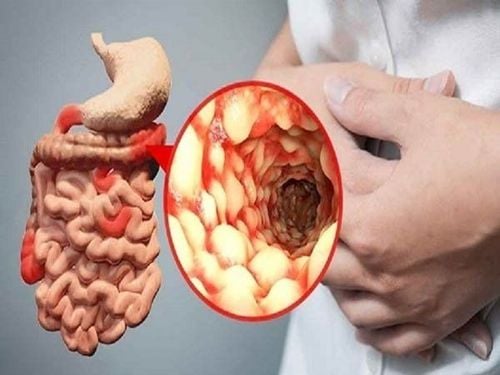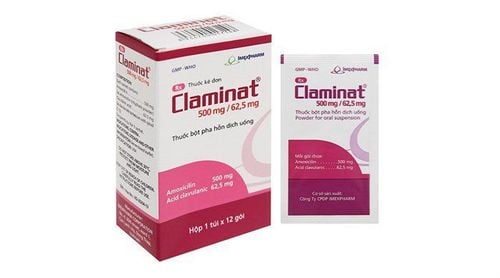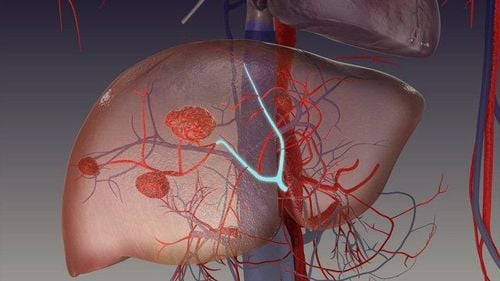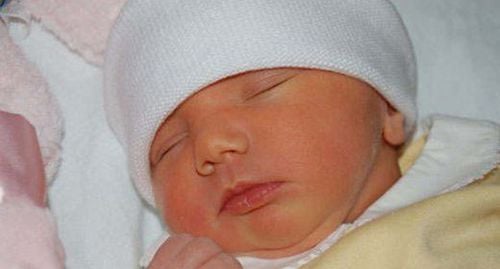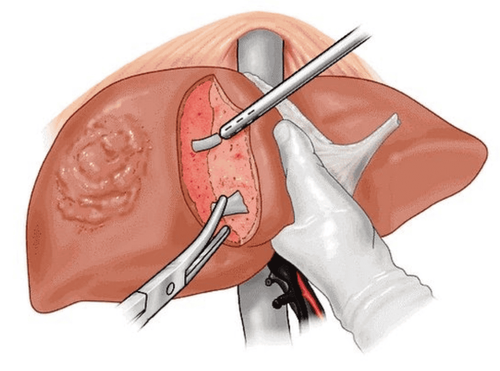This is an automatically translated article.
The article is professionally consulted by Master, Doctor Nguyen Thi Ngoc - General Internal Medicine - Endocrinology - Department of Examination & Internal Medicine - Vinmec Central Park International General Hospital. Doctor has more than 10 years of studying, researching and working in the field of endocrinology.Bilirubin is the main bile pigment formed from the degradation of heme in red blood cells. Bilirubin blood test is a special test necessary to assess the health status of people, helping doctors to diagnose and treat diseases effectively.
1. Bilirubin test results are normal
Total Bilirubin Neonates with a bilirubin index: < 10 mg/dl or < 171 μmol/L. Over 1 month of age with a bilirubin index: 0.3 - 1.2 mg/dl or 5.1 - 20.5 μmol/L. Adults with a bilirubin level: 0.2 – 1.0 mg/dL or 3.4 – 17.1 μmol/L. Direct Bilirubin Normal: 0 - 0.4 mg/dl or 0 - 7 μmol/L Indirect Bilirubin Normal: 0.1 -1.0 mg/dL or 1 - 17 μmol/L Direct Bilirubin/Total Bilirubin Ratio Normal: < 20%.2. Factors affecting Bilirubin test results
Results will vary slightly depending on the lab and adult men. In the case of women and children, results may be slightly different because results are affected by certain foods or by taking medications or exercising.Medications that can also cause bilirubin levels to be lower than normal include: barbiturates, caffeine, penicillin, high doses of salicylate, atazanavir (HIV antivirals can increase levels of indirect bilirubin), citrates, corticosteroids, ethanol, penicillin, protein, salicylate, urea...
Drugs that raise bilirubin levels such as: antibiotics, some birth control pills, diazepam (Valium), flurazepam, indomethacin (Indocin), and phenytoin (Dilantin), adrenaline, allopurinol, antimalarial, vitamin C, azathioprine, chlorpropamide, cholinergics (cholinergics), codeine, dextran, diuretics, isoproterenol, levodopa, MAO inhibitors, meperidine, methyldopa, methotrexate , morphine, oral contraceptives, phenazopyridine, phenothiazines, quinidine, rifampin, streptomycin, theophylline, tyrosine, vitamin A...
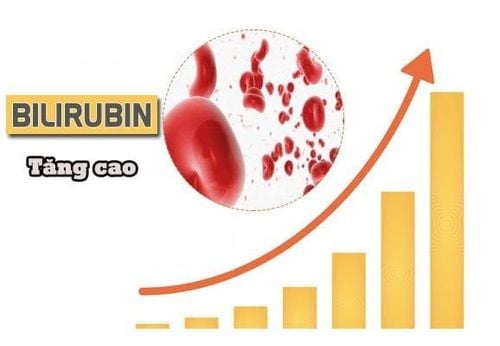
Nồng độ bilirubin tăng cao
3. What are the effects of high Bilirubin?
Elevated levels of bilirubin (either direct or indirect) above normal mean a higher risk of liver disease. Usually a high bilirubin level indicates an increasing rate of red blood cell damage.For infants, rapid determination of bilirubin blood levels is also an important method. Timely testing before excess indirect bilirubin causes brain cell damage in children. Consequences of injury will slow down children's intellectual development, impaired learning and development. In addition, it also causes children to have hearing loss, eye movement disorders or worse, death ...
4. What is high bilirubin?
Elevated total bilirubin levels in :Pregnancy Newborns and premature infants Vigorous physical activity Causes of unconjugated hyperbilirubinemia. Causes of conjugated hyperbilirubinemia Hypothyroidism. Increased concentration of unconjugated bilirubin (indirect bilirubin) in cases of:
Excessive destruction of red blood cells Hemolysis: malaria, neonatal Rh incompatibility, hemoglobinopathy, deficiency of red blood cells thrombocytopenia, disseminated intravascular coagulation, autoimmune hemolysis. Ineffective erythropoiesis: Biermer's anemia. Lots of blood transfusions. Strong spleen. Large hematoma. Impaired bilirubin conjugation in the liver Gilbert's disease. Decompensated heart failure. Drugs: Rifampicin... Jaundice in newborns and premature babies. Increased levels of conjugated bilirubin (direct bilirubin) in cases of:
Hepatocellular disease: viral hepatitis, drug-induced hepatitis (INH, Rifampicin, Halothan, Methyldopa, Chlorpromazine, Paracetamol, Salicylate..., inflammation). toxic liver; decompensated heart failure Cirrhosis, primary biliary cirrhosis, sclerosing cholangitis Liver infection or lesions (eg, tumor pathology, liver metastases, Wilson's disease, granulomatosis.. Congenital disorders: Dubin-Johnson disease (disorder of excretion of bilirubin), Rotor syndrome Drugs: Chlorpromazine, barbituric, oral contraceptives, testosterone, erythromycin Gallstones, acute or chronic pancreatitis, cysts pseudopancreatitis in acute pancreatitis, pancreatic cancer, ampulla of Vater, cholangiocarcinoma, biliary stricture or atresie.
5. Bilirubin helps in differential diagnosis of jaundice
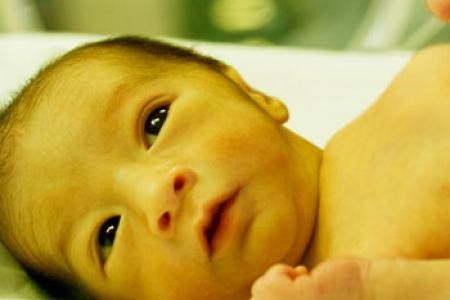
Bilirubin tăng cao trong máu sẽ xâm nhập vào tổ chức, gây vàng da
5.1 For jaundice due to biliary obstruction Direct Bilirubin index is very high in the blood, total bilirubin is also increased, there is bilirubinuria. Plasma alkaline phosphatase is the best standard to evaluate biliary obstruction, if increased more than 5 times above normal, it indicates biliary obstruction. Jaundice due to biliary obstruction is common in bile duct obstruction due to stones, pancreatic head tumors, due to worms entering the bile ducts.
In extrahepatic biliary obstruction, the bilirubin may gradually increase to 513 - 684 mol/l. In intrahepatic biliary obstruction or metabolic or infiltrative liver disease: plasma bilirubin is normal but Alkaline phosphatase is elevated. 5.2 Hemolytic jaundice (hemolysis) In hemolysis, total plasma bilirubin is rarely more than 5 times the normal level, unless associated with liver disease. When there is liver disease, indirect bilirubin increases very high in the blood, total bilirubin increases sometimes up to 30-40 times, even up to 80 times higher than normal. Bilirubinuria is negative (with urobilinogenuria). The ratio of direct bilirubin to total bilirubin can be used to differentiate:
Rate < 20%: hemolytic state. The rate of 20 - 40%: shows higher intrahepatic disease than extrahepatic biliary obstruction. Rate 40 - 60%: the disease occurs in both inside and outside hepatocytes. Incidence > 50%: obstruction is more common outside the liver than in the hepatocytes. Hemolytic jaundice is common in hemolytic jaundice in infants (physiological jaundice), malignant malaria, venomous snakebites (cobra)...
5.3 Jaundice due to liver damage In case of disease Acute viral hepatitis (infectious hepatitis), bilirubin levels rise early and appear in the urine before symptoms of jaundice, urobilinogenuria. When the liver is damaged, it will reduce the conversion of total bilirubin into direct bilirubin, so total bilirubin will increase in the blood but direct bilirubin will decrease.
In liver failure, severe cirrhosis, direct bilirubin is reduced due to decreased liver function, reducing the conjugation with glucuronic acid. In liver cancer, serum total bilirubin is very high, which can be 10-20 times higher than normal (171-342 mol/l).
Please dial HOTLINE for more information or register for an appointment HERE. Download MyVinmec app to make appointments faster and to manage your bookings easily.




